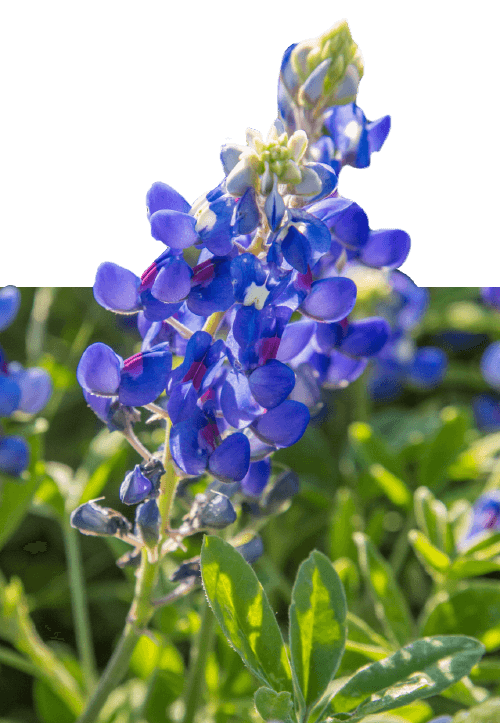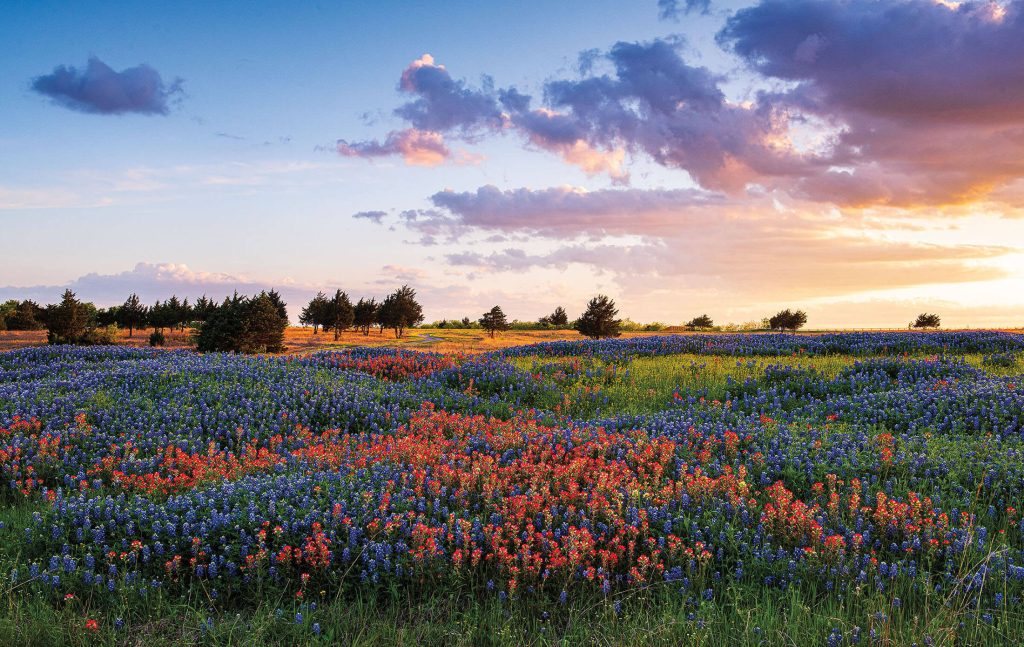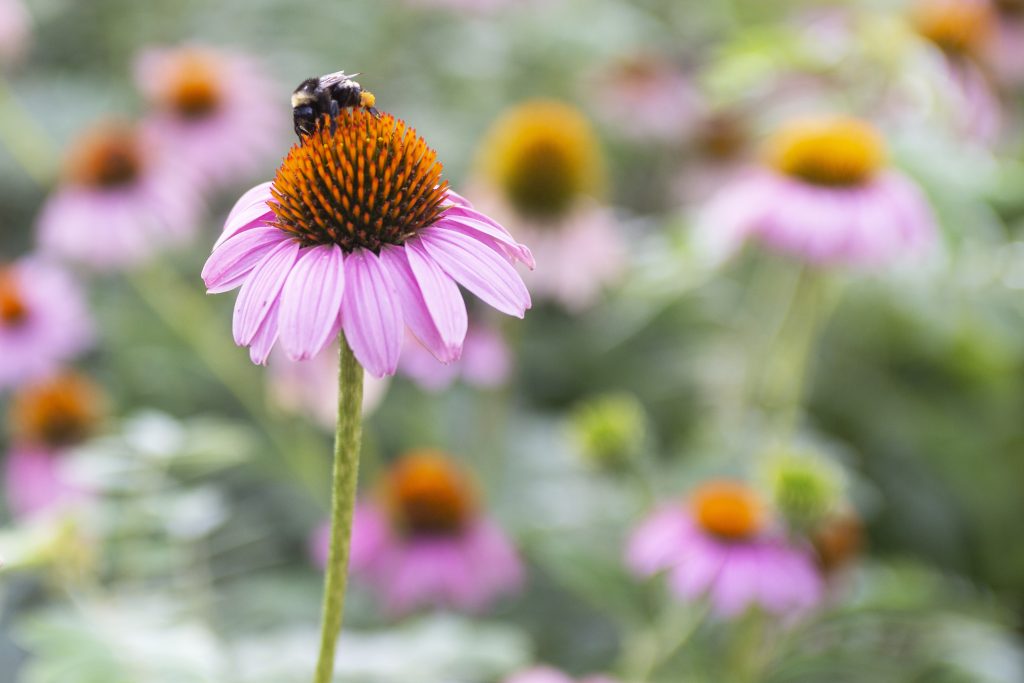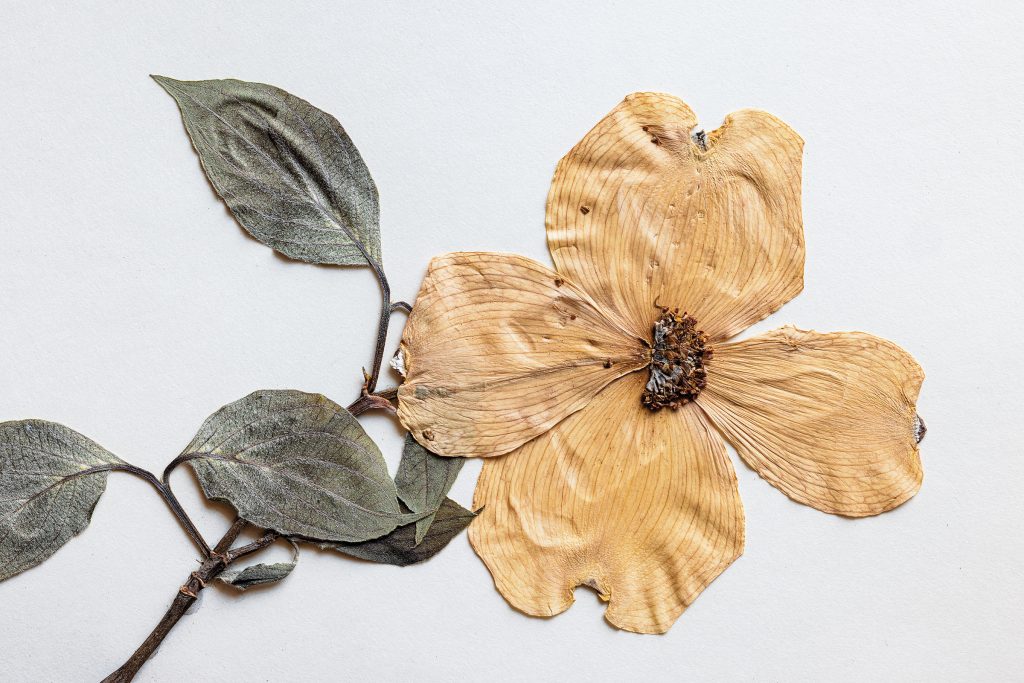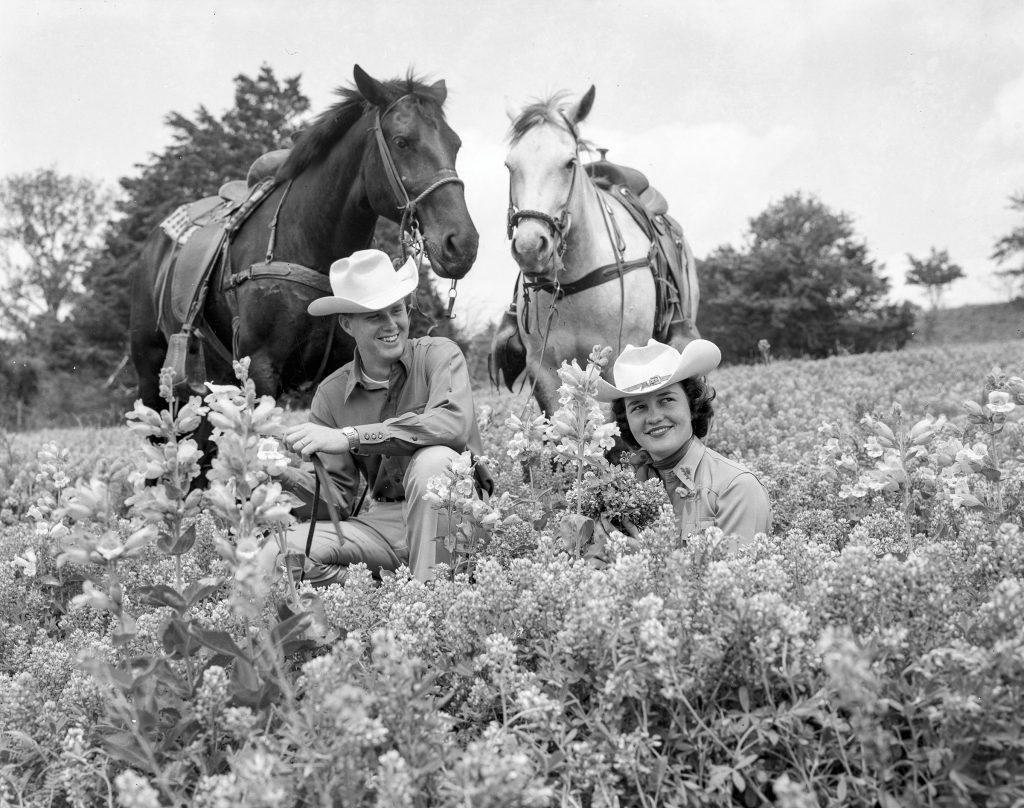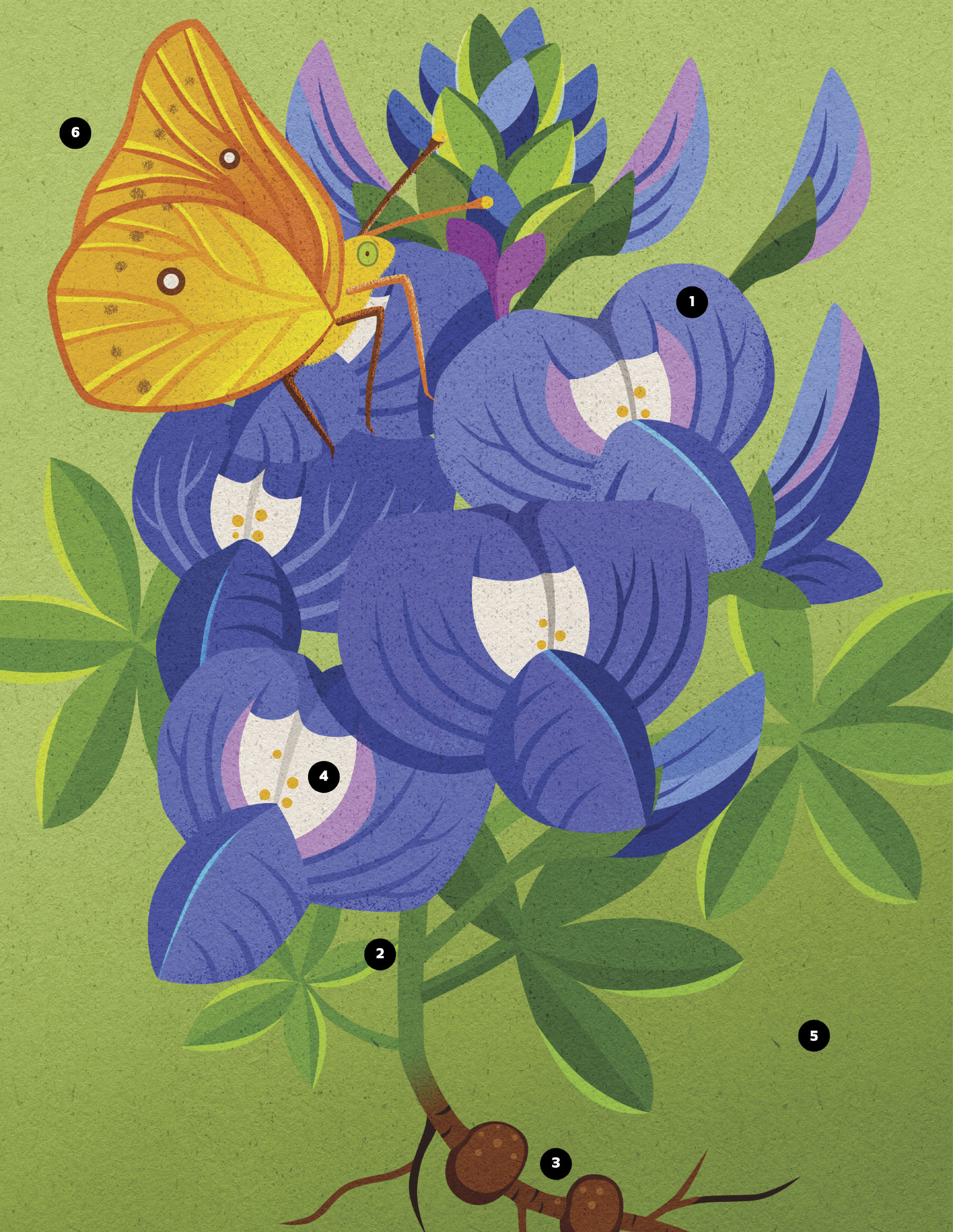
FLOWER Up to 50 pea-like flowers, usually blue at the bottom and white at the top, form each of the bluebonnet’s signature blooms. The flower’s dark blue color takes a bit of work from the plant, as no plant pigment is truly blue. The blue hue results from other, more common pigments mixing and the chemicals in the flower’s environment modifying its pH. Bluebonnets aren’t always blue, either. White, violet, and pink flowers can develop naturally through genetic mutations or selection. Jerry Parsons of the Texas A&M AgriLife Extension Service selectively bred bluebonnets to create a variety of colors, including a maroon flower as an ode to Texas A&M University.
STEM A winter annual, the bluebonnet germinates and sprouts in one year, flowering the following spring. During the fall and winter, the plant grows a rosette of leaves flat on the ground before “bolting”—sprouting a stem with florets on it—in late February or early March. The stem usually grows to be about 7 to 12 inches.
TAPROOT The plant’s growth comes from the taproot below the rosette. A storage organ, the taproot reserves energy that will be used for flowering and fruiting. Rhizobium bacteria in the soil form nodules on the roots that convert nitrogen into a form the plant can use. This improves plant growth and enhances the soil with nitrogen once the plant dies.
SEED Texas bluebonnets are explosively dehiscent, meaning that when the fruit matures, it pops open and slings seeds up to 20 feet away. According to Joe Marcus, the Native Plants of North America Program coordinator for the Lady Bird Johnson Wildflower Center, bluebonnet seeds are best sown in late May or early June, since that is when the flowers naturally scatter their seeds. The seeds typically germinate in September and October.
ENVIRONMENT Bluebonnets don’t compete well with other plants. They grow best on open ground and in direct sunlight. Drought tolerant, the plants rot if watered too much and grow well in soil with a neutral to slightly basic pH. “The Texas bluebonnet really only wants to grow in Texas,” Marcus says. “It’ll grow a little bit outside of Texas, but it’s a true-blue Texan.”
COMPANION INSECTS While bees rely on bluebonnets for nectar and pollen, there are not a lot of other animals or insects that depend on the state flower. In fact, the leaves and seeds of the plant can be poisonous if ingested, causing many grazing animals—and humans—to steer clear. However, there are certain species of butterfly—including the gray hairstreak, northern cloudywing, painted and American lady, Henry’s elfin, and orange sulphur—that use the plant as a larval host.
6
Number of bluebonnet species that are considered the state flower
64.75
Height, in inches, of the tallest bluebonnet on record, found at Big Bend National Park
1901
Year the state Legislature named the bluebonnet the state flower
Flower fodder:
Because of how the law is written, all six known bluebonnet species in Texas are technically the state flower: Lupinus subcarnosus, L. texensis, L. havardii, L. concinnus, L. plattensis, and L. perennis.
